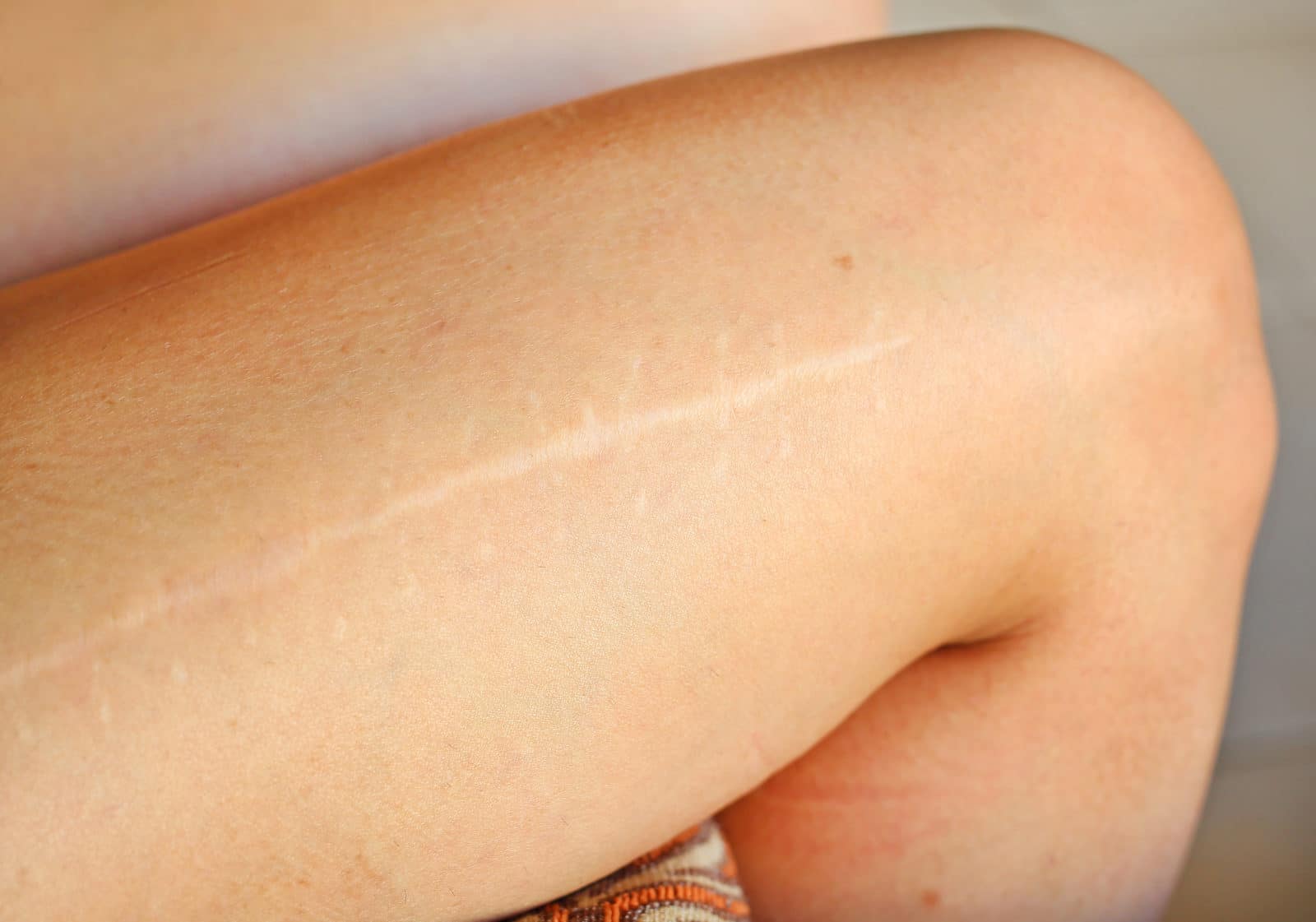
Scars are a natural part of the body’s healing process. Anytime the skin is cut, burned or fundamentally damaged in some way, a scar must form. Scars, essentially, are part of the final phase of the body’s healing or repair process. Whether from an accident, surgery, acne, trauma to the skin, or even an ear piercing, a scar or keloid can result.
The first phases of wound healing include controlling and stopping the bleeding, followed by sealing the wound to prevent infection. That’s where collagen steps up – this is a naturally occurring protein that comes to the rescue in an effort to repair and close the wound. That’s why many of our injuries require stitches for more serious injuries. If left open, the chance of healing without a scar is very remote.
In a nutshell, scars take a year or two to mature, or completely heal themselves. This doesn’t mean you won’t see evidence of the injury. However, the scar will fade gradually over time to a pearly white, even though it starts out as an angry red welt. Because everyone scars differently, there’s no way to predict how a scar will turn out. This will depend on your skin color and tone, the extent of the injury, and how well you care for the wound. In addition, using products like Scarfade on the wound can boost the chances of fading exponentially.
There is no way to completely avoid scarring, especially with more serious injuries. This is because it’s ingrained in your body to come to the defense of its own skin when injured. It works hard to repair the wound, creating those tough fibers (remember, collagen) to provide the skin with added strength and flexibility. This helps prevent bacteria from penetrating the wound, plus it helps to reconnect the tissues that were broken apart by the injury, says the American Academy of Dermatology. While this is happening, your body protects that area by forming a scab over the wound that acts like nature’s Band-Aid to keep germs at bay. When the wound is healed, the scab falls off. What’s left is a scar in most cases, usually pale pink, red, brown and then eventually turning silver or white.
If you’re lucky, you’re left with a fine, flat line that more or less matches the surrounding skin color. If not, you will have a keloid, a very thick scar that looks ropey. A hypertrophic scar is thicker than a basic scar, but not as thick as a keloid.
To minimize scarring, how you treat the healing wound is essential. Use Scarfade as directed daily to lessen the appearance of scars over time.
